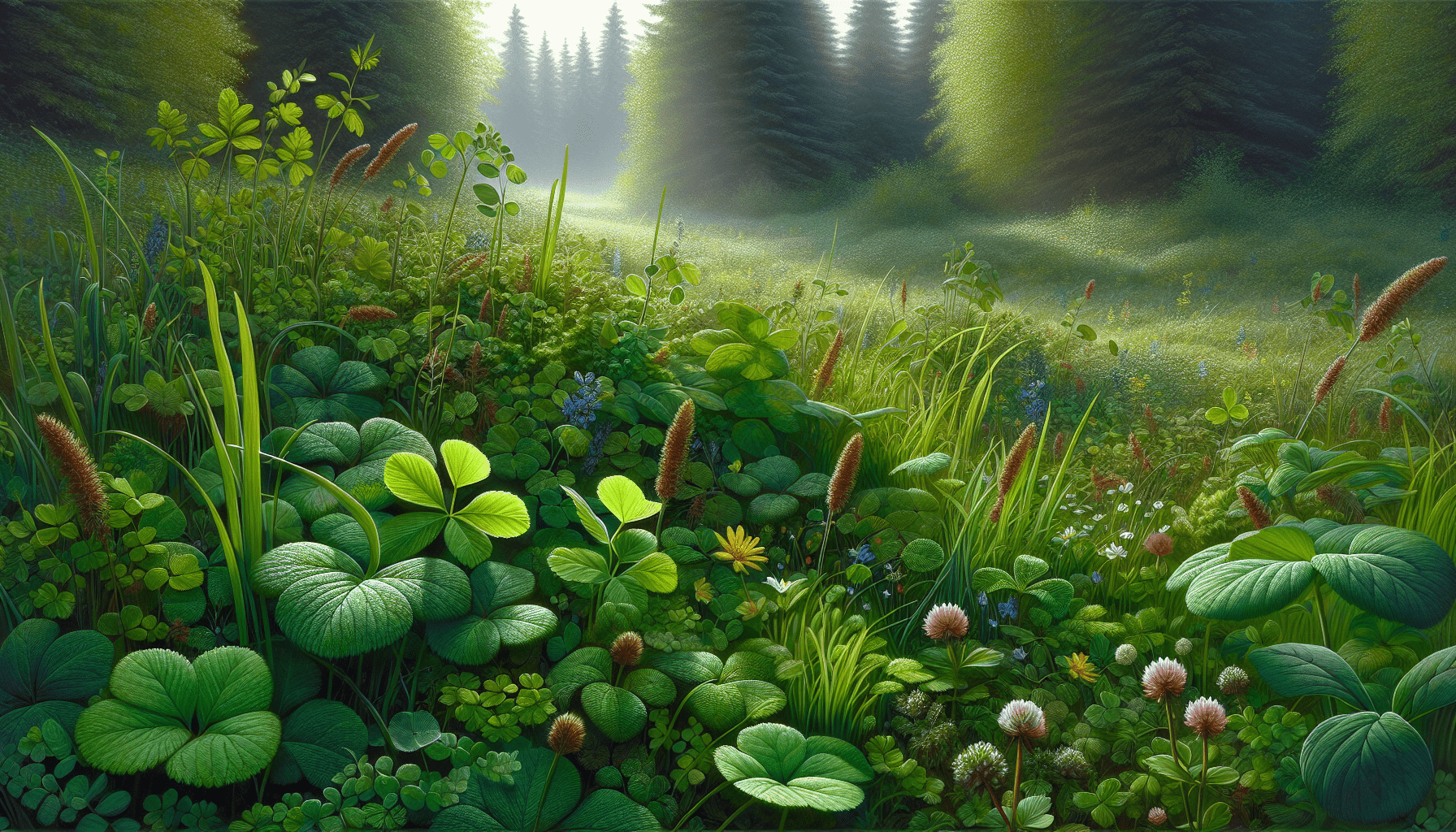
Have you ever wondered what the best way to nourish deer is throughout the year? Providing the right nutrition is essential for their health and wellbeing. Understanding their dietary needs can ensure they thrive in their natural habitat, and it’s fascinating how their nutritional requirements shift with the seasons.
Understanding Deer Nutritional Needs
Deer are herbivores, meaning they primarily feed on plants. However, their nutritional needs vary depending on several factors such as age, sex, season, and even the specific species of deer. Adequate nutrition is essential for growth, reproduction, and overall health. By understanding what deer eat and when, you can assist in promoting a healthy population in your area.
Factors Affecting Deer Nutrition
Several factors can influence the nutritional requirements of deer:
-
Age: Fawns (young deer) have different nutritional needs than adult deer. Young deer require higher protein and fat for growth.
-
Sex: Female deer, especially those that are pregnant or nursing, have increased nutritional demands.
-
Season: Seasonal changes in food availability can affect what deer need.
-
Health Status: Deer that are sick or injured will have different dietary requirements.
In recognizing these factors, you can better tailor the diet you provide for deer.
Seasonal Nutritional Requirements
Every season brings a different environment and food availability. So, let’s break down what deer typically need throughout the year.
Winter: Providing the Right Calories
As the cold sets in and food becomes scarce, deer need energy-rich food to cope with the harsh weather.
During winter, deer tend to rely on woody browse, the twigs, leaves, and bark of trees and shrubs. The nutritional value of these items is different from the lush green foliage of warmer months, thus ensuring a balance in their diet is key.
Suggested Foods for Winter
| Food Type | Nutritional Benefits |
|---|---|
| Hardwood Browses | High in fiber and energy |
| Corn | High in carbohydrates |
| Soybeans | Rich in protein and fats |
| Alfalfa Hay | Good source of protein and fiber |
Spring: A Time for Growth
Spring introduces new growth, and it’s essential for the fawns and does (female deer) who are preparing for birthing or nursing.
During this season, deer need a diet rich in protein to support the development of fawns and to recover from winter.
Suggested Foods for Spring
| Food Type | Nutritional Benefits |
|---|---|
| Green Forbs | Good source of vitamins and minerals |
| Clover | High protein content |
| Chicory | High in protein and helps with digestion |
| Grasses | Provide energy quickly via carbohydrates |
Summer: Sustaining Health
Summer is the time for replenishment and growth, as food is abundant. During this season, the focus is on keeping deer hydrated and nourished to support their growth and reproductive activities.
Deer require a well-balanced diet with an emphasis on both protein and carbohydrates.
Suggested Foods for Summer
| Food Type | Nutritional Benefits |
|---|---|
| Fresh Leaves | High in water content; replenishes hydration |
| Legumes | Rich in protein |
| Fruits (e.g., berries) | Nutrition and hydration |
| High-Quality Pastures | Vital for maintaining body condition |
Fall: Preparing for Winter
As the days begin to shorten and temperatures drop, deer start to prepare for the harsh winter ahead. This is the time to ensure they store enough fat for energy.
Deer require food that is high in carbohydrates to build reserves before the cold season arrives.
Suggested Foods for Fall
| Food Type | Nutritional Benefits |
|---|---|
| Acorns | High in fat and carbohydrates |
| Corn | Provides energy |
| Apples | Easy energy source and sweetness |
| Sweet Potatoes | High in carbohydrates and nutrition |

The Importance of Mineral Supplements
Balanced nutrition isn’t just about food; minerals play a crucial role in deer health. Supplementing minerals can help deer achieve their nutritional needs, especially when natural sources are low in availability.
Key Minerals for Deer
-
Calcium and Phosphorus: Essential for bone growth, antler development, and lactation.
-
Sodium: Crucial for maintaining hydration levels.
-
Magnesium: Important for muscle and nerve function.
-
Zinc and Copper: Vital for immune function and overall growth.
Providing mineral licks or blocks can significantly enhance the health of deer populations.
Maintaining Habitat for Nutritional Health
Creating a suitable habitat for deer is just as crucial as providing them with food. A well-maintained environment can ensure that deer have access to the nutrients they need throughout the year.
Strategies to Maintain Deer Habitat
-
Diverse Plant Life: Ensure a variety of vegetation. Native plant species often provide the best nutritional value for deer.
-
Water Sources: Access to fresh water is vital for nourishment, particularly in the summer months.
-
Avoiding Overgrazing: Limiting the number of deer in an area will allow plants to regenerate and maintain a balanced ecosystem.
-
Employing Controlled Burns: In certain environments, controlled burns can encourage new growth, which can help support deer nutrition.

Common Mistakes to Avoid
While you may have the best intentions when it comes to providing for deer, some common mistakes can hinder their nutritional health.
Avoiding the Following:
-
Over-Feeding: Providing too much food can lead to health issues.
-
Lack of Variety: Deer thrive on diverse diets. Sticking to one type of food can cause imbalances.
-
Ignoring Seasonal Changes: Remember to adapt their diets as seasons change.
-
Neglecting Water Needs: Always ensure there’s a fresh water supply available, no matter the time of year.
Conclusion: A Year-Round Commitment
Feeding deer throughout the year is more about creating a sustainable environment than simply providing food. By understanding their nutritional needs and the factors that influence those needs, you’re taking the first step to ensuring a healthy deer population.
As seasons change, so do their dietary requirements. Paying attention to their needs, offering variety, and maintaining their habitats will offer them the best chance for a healthy life.
In nurturing the deer population within your reach, you play an integral role in the ecosystem. Your efforts don’t just benefit the deer; they also promote biodiversity, ensuring that future generations can enjoy the beauty of nature. So, next time you see a deer, take a moment to appreciate the complexity of its needs and the role you can play in supporting those needs throughout the year.





